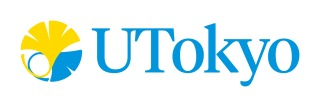English wRIting Consultant (ERIC)
Resume styles around the world
By Danielle Delatte
April 4, 2017
When applying to jobs or university in various countries, it’s worth checking out the local taboos for resumes. One country may insist on a photo while another will think it’s an odd addition. Always check the job posting for instructions, but when in doubt, this can be a handy reference. Refer to the links at the bottom of each section for more detailed advice.
USA
Resumes in the US are typically one or two pages (US Letter) and are tailored to the exact job description. Students should try very hard to keep their resume to one page. There is also a distinction between a resume and a curriculum vitae, or CV. Resumes are shorter and a CV may include extra information like a full list of papers, mentees, or presentations.
To make a resume pop, it’s important to use a very readable font, keep the text as succinct as possible, bold appropriately, and leave as much white space as possible. There is a huge variety of templates, but most include several basic sections.
At the top, applicants include their name, phone number, and email address. Sometimes they include a postal address. They never include a photo or birthdate. (This is in an attempt to prevent racial or age discrimination.)
Typical sections include: Education, (Work) Experience, Skills, Activities, and Awards
Optional sections (depending on industry/position) could include: Objective (usually first section if included), Leadership, Community Service, and Professional Memberships
The order matters too. For early career professionals, education is often listed first, but by mid-career, education may be listed last or after the work experience section. Other information like GPA or the title of a thesis might disappear as a person gains experience.
The meat of your resume will probably be the Work Experience section, and this uses very specific grammar. For each job/internship/position, include the following on the first two lines (exact templates vary): Job title/position, company, location, dates. Then include bullets to describe your personal contributions using active past tense verbs. (Present tense verbs can be used for your current position.) Choose a variety of verbs so each bullet point looks different. The thesaurus is your friend.
For example, it could look like this:
| Project Engineer | Washington, DC |
| ABC XYZ Inc | August 2000-May 2005 |
- Performed 15 design reviews for clients in Boston and New York City
- Oversaw a project budget of $2 million for Project ALPHA
- Led the transition team as Project BETA grew from 10 to 100 people
- Organized three workshops to study the impact of the new regulation 1.1.1
Pro Tip: for US-style resumes, make one long “master resume” with all of your activities, education, and experience. (This could be more than two pages.) As you apply to each job, remove any irrelevant experience or section until you get it down to the desired length. For example, an application to a non-profit organization might highlight your volunteer experience while one to a tech company might highlight a side mechanical project.
Pro Tip #2: if you are applying to a university, see if they have a career page. These are often useful sources of information and give you a sense of what is typical for that region.
- When you are finished with your resume, see if it passes these two tests:
- Print it out and glance at it for 5-10 seconds. What was your overall impression? (Get a second and third opinion!) For highly competitive jobs, a recruiter may only glance at a resume before going to the next one. Help draw the reader’s eye with bold or larger text in appropriate places.
- Does it include a lot of keywords from the job description? Many large companies use resume text scanning software before the resumes even get to a recruiter. Scan the job description for keywords and make sure those are included in your final document. (This could be as simple as technician vs. electronics specialist.)
Finally, paint yourself in the best light, but don’t lie!! Fabricating experience or education is grounds for dismissal and disqualification.
Links
http://www.american.edu/careercenter/Resumes.cfm
https://gecd.mit.edu/resources/career-handbook
Europe
Europe, a diverse conglomeration of cultures and ideas, has a diverse conglomeration of CV expectations. (Europe appears to use “resume” and “CV” interchangeably.) The same advice for the American-style resume holds true: find a reputable university in the country and look in their careers section for CV suggestions. European CVs use the A4 paper size.





